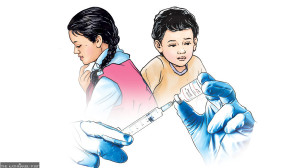National
Baglung mums bear brunt of crumbling maternity care
With birthing centres out of reach, medical equipment failing, and roads often impassable, home births remain a dangerous norm in remote villages.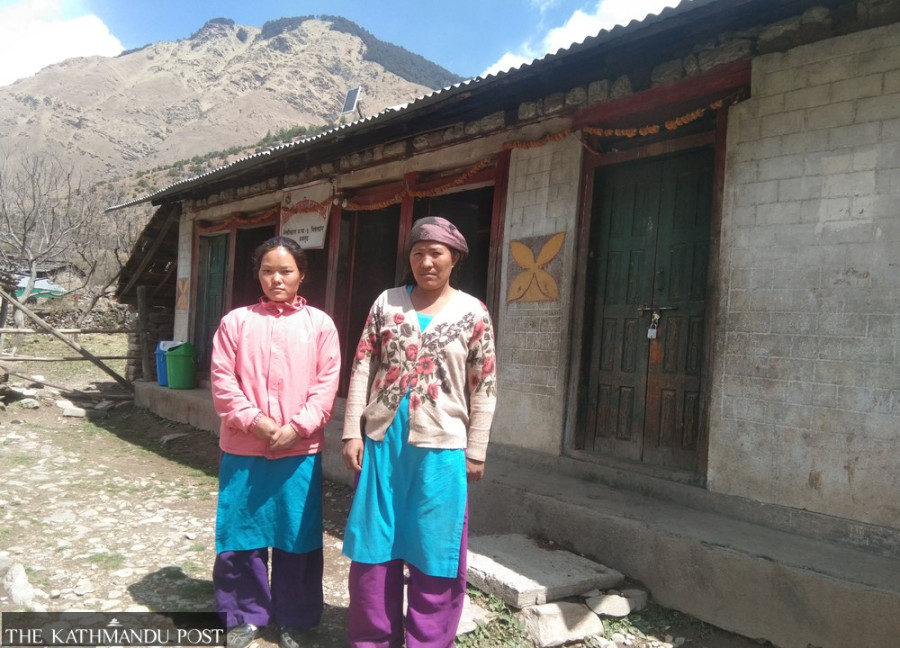
Prakash Baral
In Baglung’s remote municipalities of Nisikhola and Dhorpatan, childbirth is too often a gamble with a woman’s life. Despite national policies and funding promises, the reality on the ground remains stark: expectant mothers either walk for hours to reach facilities or give birth at home — often without medical support.
In ward 5 of Nisikhola Rural Municipality, the community health unit in Niseldhor lacks even the most basic infrastructure for maternity care. There is no birthing centre. The unit is staffed only by auxiliary nurse midwife (ANM) Yam Kumari Gharti and office assistant Prem Kumari Gharti. They handle an average of 10–12 patients daily with minimal equipment.
The nearest birthing centre is a three- to four-hour walk away. To reach the municipal office in Nisi, one must walk for 10 hours. “When I was expecting, I had to rent a room in Palpa for a month before delivery,” said Yam Kumari, who could afford the journey, unlike most women in her community.
Prem Kumari, by contrast, delivered all five of her children at home. “We were never taught to go to a hospital for childbirth. I couldn’t leave the house, and there was no one else to help,” she said. Many women in the area share similar stories. The terrain is unforgiving, with no proper road network linking Niseldhor to the wider municipality. In the rainy season, overflowing rivers like the Bhujikhola make travel impossible. In winter, hiring a vehicle can cost upwards of Rs10,000—a sum most families cannot manage.
The issue is compounded by poverty and marginalisation. An estimated 77 percent of the population in Dhorpatan valley, including Niseldhor, belongs to the Dalit community. Most survive through seasonal cattle herding and potato farming. With limited income and little state support, safe maternity care remains out of reach.
Dhorpatan Municipality has made some progress. A birthing centre was established near the Dhorpatan Hunting Reserve. However, the facility is far from reliable. “The baby warmer broke four months ago, and there's no replacement coming,” said ANM Sita Budhamagar. “We now use firewood — about 8 to 10 bundles per birth — to keep newborns warm.”
She explained how the cold lengthens labour and increases complications. “When it’s urgent, families try to hire a jeep and rush to Burtibang, but that's expensive and not always possible.”
In the previous month alone, 334 people accessed health services at the Dhorpatan health post. During the current fiscal year, only 16 institutional deliveries have taken place, out of an estimated 35 antenatal visits. Many women still give birth at home, assisted only by family members or traditional birth attendants.
In the absence of functioning equipment and qualified medical personnel, the health post can only offer basic services like pregnancy check-ups and minor treatments. Women with complications are referred to distant hospitals — if they can get there in time.
Hospitals still under construction
Both Dhorpatan and Nisikhola had hoped to solve these issues with new hospital buildings. Construction of a 10-bed hospital in Nisikhola began in 2020 but remains incomplete. Similarly, in Dhorpatan, the construction of a health facility contracted in November 2023 has stalled. Only 50 percent of the work has been completed. The contractor stopped work after receiving Rs87.6 million out of a promised Rs175 million, citing non-payment.
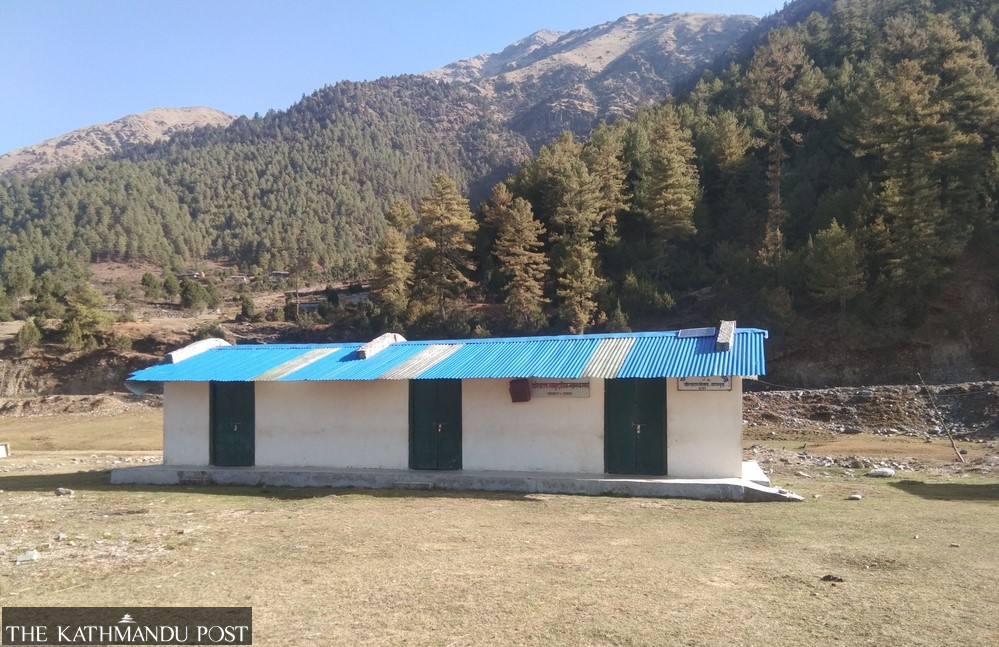
Meanwhile, Baglung District Hospital in Burtibang, declared back in 2010, only became operational in 2024 — 14 years after its announcement. It still suffers from equipment shortages and lacks enough trained doctors. According to nurse Parbati Aryal, the hospital sees up to 250 patients per day and manages around 20 deliveries per month, including caesareans. However, many critical cases are still referred to Palpa or Butwal due to the absence of essential surgical tools.
Home births still common
According to the Provincial Public Health Office, only 69 percent of births in Baglung occur in institutional settings. Including women who travel to other cities such as Pokhara, Palpa, or Butwal, the rate rises to 80 percent. However, in remote municipalities like Nisikhola, Dhorpatan, and Badigad, the prevalence of home births remains high.
“Geography and lack of awareness are major obstacles,” said Laxmi Sharma, a public health officer in Baglung. “We run regular vaccination and awareness campaigns, but we still see home deliveries because the message hasn’t reached the most remote settlements.”
Sharma added she only recently learnt that the baby warmer in Dhorpatan was out of order. “We supplied it last year. We’ll now investigate whether it can be repaired or replaced,” she said.
Nepal’s federal government currently provides a transportation allowance of Rs2,000 for institutional births. Nisikhola adds another Rs2,000, while Galkot Municipality offers an additional Rs4,600. The extra support in Galkot has nearly eliminated home deliveries, according to local health officials.
In contrast, in places like Dhorpatan, women are still turning away from health facilities. “We referred a woman to Burtibang, but she went home,” said ANM Hiramati Gharti from Bhalkot Health Post. “After delivery, she began haemorrhaging. Only then did we find out, and we rushed her to the hospital by ambulance. Luckily, she survived.”
A community left to cope
Despite limited means, communities have devised their own solutions. In Nisikhola, a maternity waiting home in Boharagaun has hosted over 160 women since opening. Local authorities provide free ambulance services and conduct regular check-ups for pregnant women, the elderly, and people with disabilities.
But these initiatives are not enough. As ANM Yam Kumari Gharti put it: “We do our best, but without staff, equipment or even a simple stretcher, there’s little we can offer during emergencies.”
The women of Baglung—resilient and resourceful—continue to bear the burden of a broken system. Unless infrastructure is completed, essential equipment delivered, and awareness raised in every corner of the district, institutional delivery will remain an elusive dream for many.




 9.12°C Kathmandu
9.12°C Kathmandu.jpg)

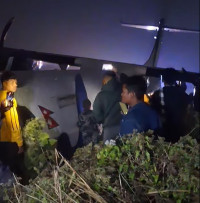

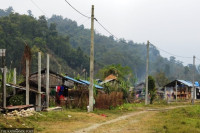





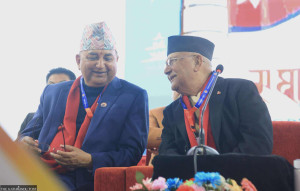



%20(1).jpg&w=300&height=200)

